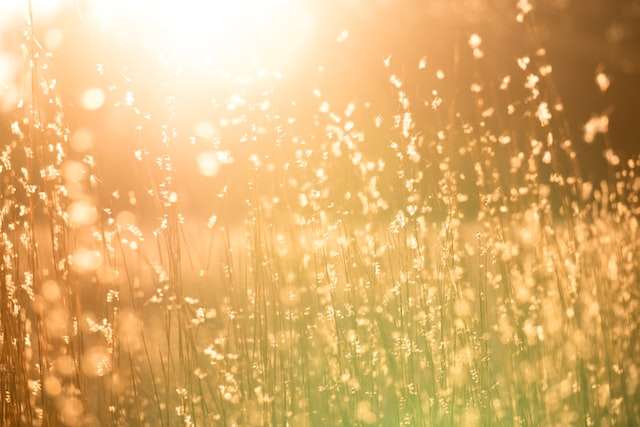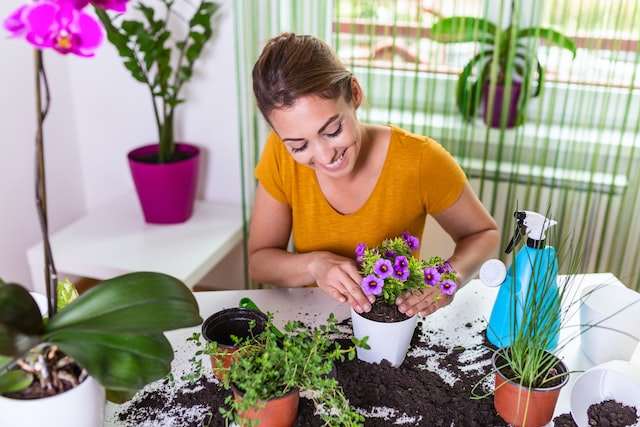
Beginners as well as experienced gardeners have a hard time maintaining the plants, especially when the plants require extra care. Many gardeners struggle with their plants dying at the same spot again and again, which makes it impossible to keep them alive or grow them into huge and healthy plants.
However, this issue can be resolved by understanding the root cause, and we are sharing some information about it!
Plants Keep Dying In Same Spot
- Unbalanced Water Quantity
Every plant needs water to survive but the frequency and amount of water differ with the plant variety. So, if you follow the same watering pattern for every plant, it can lead to plant death, irrespective of how many times you replant it.
For this reason, it’s recommended that you read about your plant and make sure you don’t underwater or overwater it. That’s because overwatering can result in the rotting of the roots while underwatering can cause plant death due to dehydration.
Underwatering
If the soil is constantly drying out and the plant is wilting or has brown leaves, it means that the plant is not getting sufficient water. If the plant is not watered regularly, it will be stressed and die.
In addition to this, dry potting mix or soil can be challenging to rewet. For this reason, you must water the plants regularly, especially if you have planted them in containers.
On the other hand, if the plant has dried and cannot be rewet, it’s recommended that you apply a soil wetting agent. In case you water the plant through an irrigation system, you must check the irrigation jets to make sure they work properly (these jets are prone to blockage, which hinders the flow of water).
Overwatering
Too much water in container plants can also cause plant death. For this reason, make sure that you let the soil dry out before you water it again – you can actually use your fingers to determine how dry or wet the soil is.
In addition to this, check the drainage holes in the plant pots to make sure they are allowing water drainage.
- Exposure To Sunlight
Sunlight is the second most critical factor when it comes down to growing plants. For instance, if your plant required direct exposure to sunlight to grow properly, insufficient sunlight exposure will result in a weak plant, which will eventually become pale, shed leaves, and die.
So, read about the plant’s sunlight needs and make sure you put the plant in a location where it gets sufficient sunlight.
- Poor Soil Condition
Many people make the mistake of using the same soil that damaged the previous plant to grow a new one. However, it can result in plant death because the soil might not have enough nutrients to support the plant’s growth, hence the death issue.
So, if you have to plant something new, make sure you use new soil and it must have the fertilizer that a plant needs.
Secondly, you must remember that plants need well-drained loam to grow properly, which is why you should choose a high-quality potting mix. In particular, the soil must not be sandy and it shouldn’t be too shallow or poorly drained.
- Too Much Fertilizer
Fertilizers are important to support plant growth because they add sufficient nutrients to the soil. However, adding too much fertilizer can burn the plant’s roots, which means the plant won’t be able to absorb any nutrients from the soil.
The inability of the plant to absorb nutrients will not only cause stunted growth but it eventually leads to plant death. For this reason, you must add only a sufficient amount of fertilizer to the plants.
According to the experts, you should not add fertilizer to the plants more than once or twice a year if the plant is growing well because adding too much fertilizer will damage the plant.
However, if you are growing plants with edible leaves, flowers, or fruits, they need regular fertilization. So, it’s recommended that you ask a plant expert to determine the correct fertilizer quantity and frequency.
- Location
Choosing the right location for the plant helps it grow swiftly and reduces the chances of plant death. For this reason, we recommend that you check the plant label guide to determine how much shade or sunlight it needs to grow.
In addition, you have to understand that some plants can die if they are exposed to high heat or frost.
Also, the strong winds can also damage the plants and lead to plant death, particularly the new plants because strong winds will hinder them from establishing a strong root system. So, check the planting location to make sure it’s well-protected.
- Planting Depth
The plant must be planted at the same depth as it was in the nursery pot. That’s because if you dig a hole that’s too shallow or deep, the plant won’t be able to create an anchor system and will eventually die. In various cases, the plants that are planted too deep won’t die but won’t grow either.
So, while you are shifting the plant from the nursery pot to the ground, you must water the plant and prevent the formation of air pockets around the plant roots (don’t expose the roots to air while planting). However, if you don’t know the correct planting depth, you can ask a professional gardener to help you out.
- Root Issue
If you keep planting your plant when other established plants are around, it won’t be able to absorb enough nutrients and water, which is important for its survival.
As a result, the plant won’t be able to compete with the roots of other plants, which leads to plant death. For this reason, you must change the location of the plant to ensure sufficient absorption of water and nutrients.
- Light
If your indoor plants keep drying, there are chances that you don’t have sufficient light indoors. Contrary to usual belief, indoor plants also need bright light to grow and insufficient light will stress the plans and lead to plant death.
So, if you have kept your indoor plant in the same location and it keeps dying, it’s time to change its location and rotate the plants to make sure they get enough bright light. Also, you must remember that insufficient exposure to light can also make plants vulnerable to pest attacks.
- Draughts
Again, if you have the plant death issue with the indoor plant, it’s likely that the plant is constantly exposed to cold or hot draughts from air conditioners or heaters.
In most cases, the ferns die because of draughts. The only solution is to change the location of the plant to make sure it’s not exposed to air produced by an air conditioner or a heater.
- Pests
There are various diseases and pests that attack plants and cause plant death. For instance, root rot can be caused by fungus or other pathogens, which leads to plant death. In addition, the pests like scale can also cause significant damage to the plants before they are even identified.
For this reason, make sure that the plant is clear from pests. In fact, when you purchase a new plant, check it at the nursery for pests because some nurseries sell infected plants to the customers.
- Pesticides
It’s common for people to use pesticides to protect their plants from diseases and pests but the incorrect application of pesticides can do more harm than good.
For this reason, you have to read the application instructions on pesticides and follow them to prevent plant death. In addition, it’s recommended that you invest in organic pesticides as they aren’t harmful to the plants.
The Bottom Line
Maintaining the plants is actually very easy if you are considerate about the sunlight, water, fertilizers, and pesticides. Focusing on these points will result in healthy plant growth and lower chances of plant death. Lastly, you can always consult a professional gardener if your plants are giving you a hard time.










